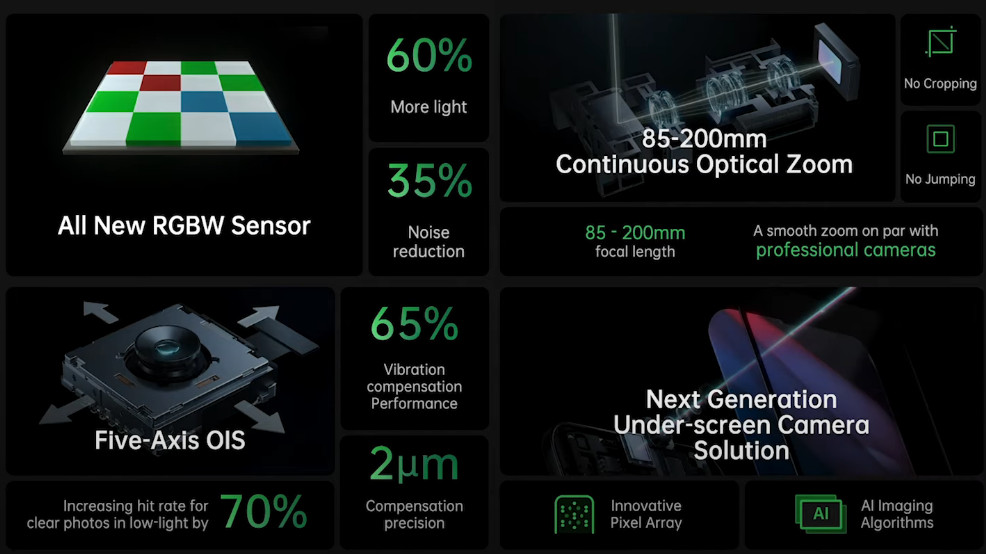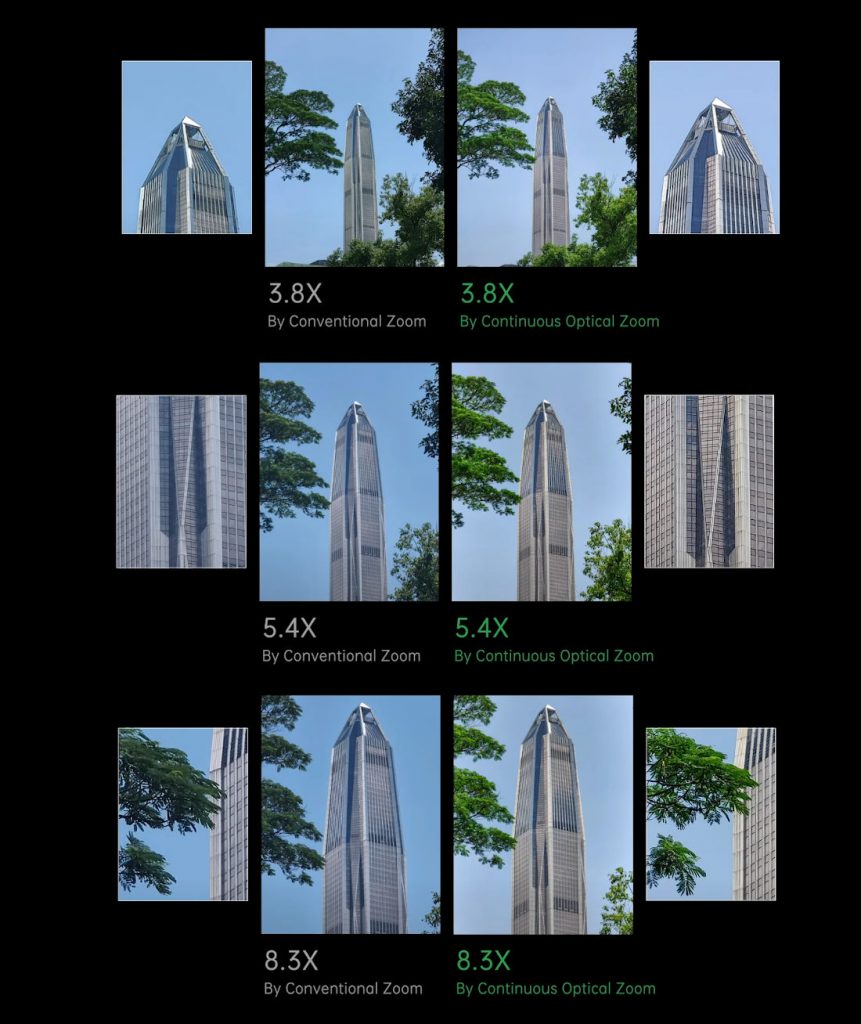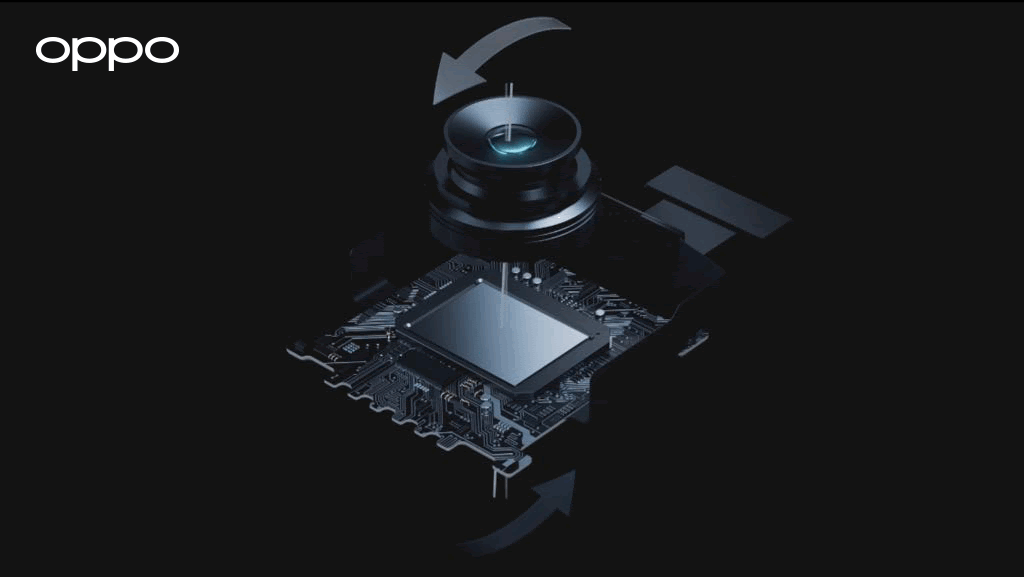
At the 2021 OPPO Future Imaging Technology Launch Even OPPO unveiled several innovative imaging technologies focused on upgrades to sensors, modules, and algorithms. These include OPPO’s next-generation RGBW sensor, the 85-200mm Continuous Optical Zoom, Five-axis OIS technology, and next-generation under-screen camera with a series of proprietary AI algorithms.

Next-generation RGBW sensor enhances light sensitivity with improved color performance
- Significantly improves light sensitivity by introducing additional white sub-pixels(W), DTI technology, and OPPO’s self-developed 4-in-1 pixel algorithm.
- As a result, the new sensor allows for 60% more light to be captured than previous sensors while achieving an up to 35% reduction in noise to deliver much clearer and brighter images in low-light conditions.
- Made using advanced manufacturing and processing technology, increasing the level of computing power needed to execute complex algorithms and maximizing the amount of data extracted via the sensor’s white pixels.
- OPPO’s proprietary 4-in-1 pixel algorithm helps to substantially boost the sensor’s color performance, preventing issues such as color inaccuracy and moiré patterns.
- The DTI pixel isolation technology effectively prevent sub-pixel crosstalk and improve image quality.
- It is also able to make portraits more expressive in both photo and video with enhancements to skin, texture, and contrast.
The new sensor will be commercially released in OPPO products from Q4 2021.

OPPO 85-200mm Continuous Optical Zoom with super smooth zoom
- 85-200mm Continuous Optical Zoom, redesigns the underlying structural module at the hardware level by adopting G+P (glass + plastic) lens technology for the first time, introducing two ultra-thin, high-precision aspheric glass lenses to significantly boost optical effects, such as minimizing stray light.
- The innovative application of a tunnel magnetoresistance sensor (TMR sensor) allows the lenses within the camera module to move with more stability and precision.
- The newly upgraded guiding shaft motor increases the dynamic tilt at which the lens system can be moved, easily supporting Continuous Optical Zoom at higher magnifications.
- These innovations support Continuous Optical Zoom at equivalent focal lengths between 85mm and 200mm, capturing sharp images at every magnification level, from up close and personal portraits to far-away landscapes, with no need to crop.
- Offers smooth transition throughout the zoom range, with image quality comparable to that of a professional camera.
- Avoids common problems like jumping, white balance inaccuracy, or color bias that conventional multi-camera zoom systems may experience.

It has also shared some sample shots comparing the normal zoom and its own continuous optical zoom.

OPPO Five-axis OIS for clearer snapshots
- Allows the system processor to receive movement data from the gyroscope, analyze it and break it down into its respective components through algorithms. The data is then passed to the two moveable components: the lens and the image sensor, which are driven by ball-bearing motors and shape memory alloys, respectively.
- When the movement is relatively small, images are stabilized mainly through lens-shift OIS – covering horizontal (X) and vertical (Y) shifting.
- When the amplitude of the movement is relatively large, however, sensor-shift OIS will also be utilized – including horizontal shifting (x), vertical shifting (y), and rolling – together with algorithm compensation, to achieve stabilization in five-axis of space.
- This allows a maximum stabilization angle of ±3°, three times more than traditional OIS technology on mobile devices, while the sensor can also shift with a precision of 2μm.
- For night-time or motion shots, OPPO’s proprietary algorithm technology can help significantly improve stability, clarity, and color performance; increasing the vibration compensation performance by up to 65%.
The OPPO Five-axis OIS will be commercially released in OPPO products from Q1 2022.

The company recently introduced next-generation under-screen camera solution features innovative pixel geometry that ensures a 400-PPI high-quality display in the under-screen camera area. It revealed more details about that at the event, but it didn’t reveal when we can expect devices featuring it.
OPPO said that it is further strengthening its global R&D capacities. Currently, OPPO has 6 Research Institutes, 5 R&D Centers, and tens of Imaging Labs around the world, including the new Imaging Lab in Hyderabad, India, and the Imaging Lab in Yokohama, Japan, which is responsible for creating a number of OPPO’s self-developed imaging technologies found in the Reno series.
Moving forward, OPPO will continue to focus on the implementation of self-developed imaging technologies and further strengthen its cooperation with industry partners to provide users with an even better imaging experience.
